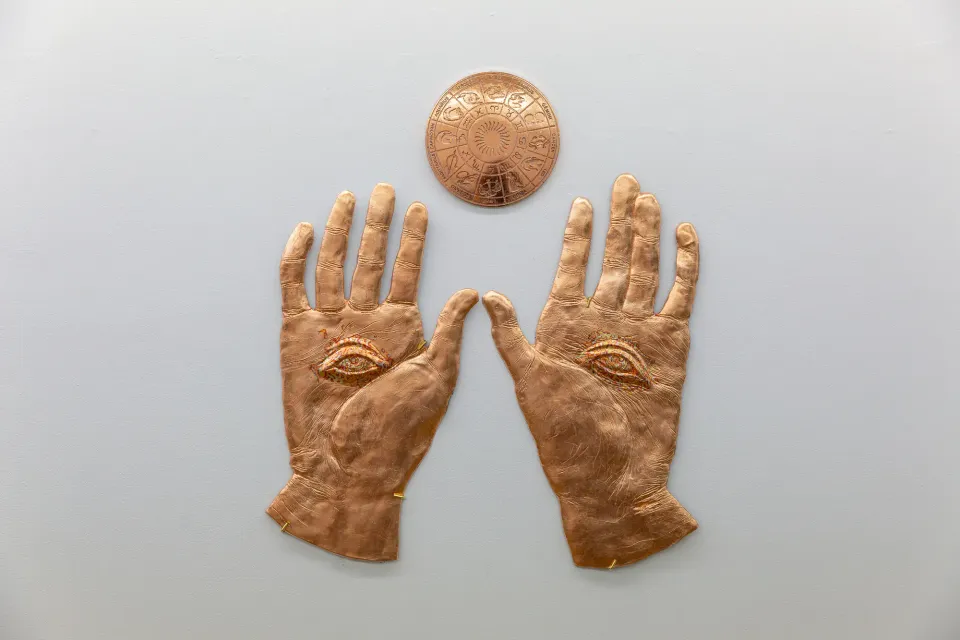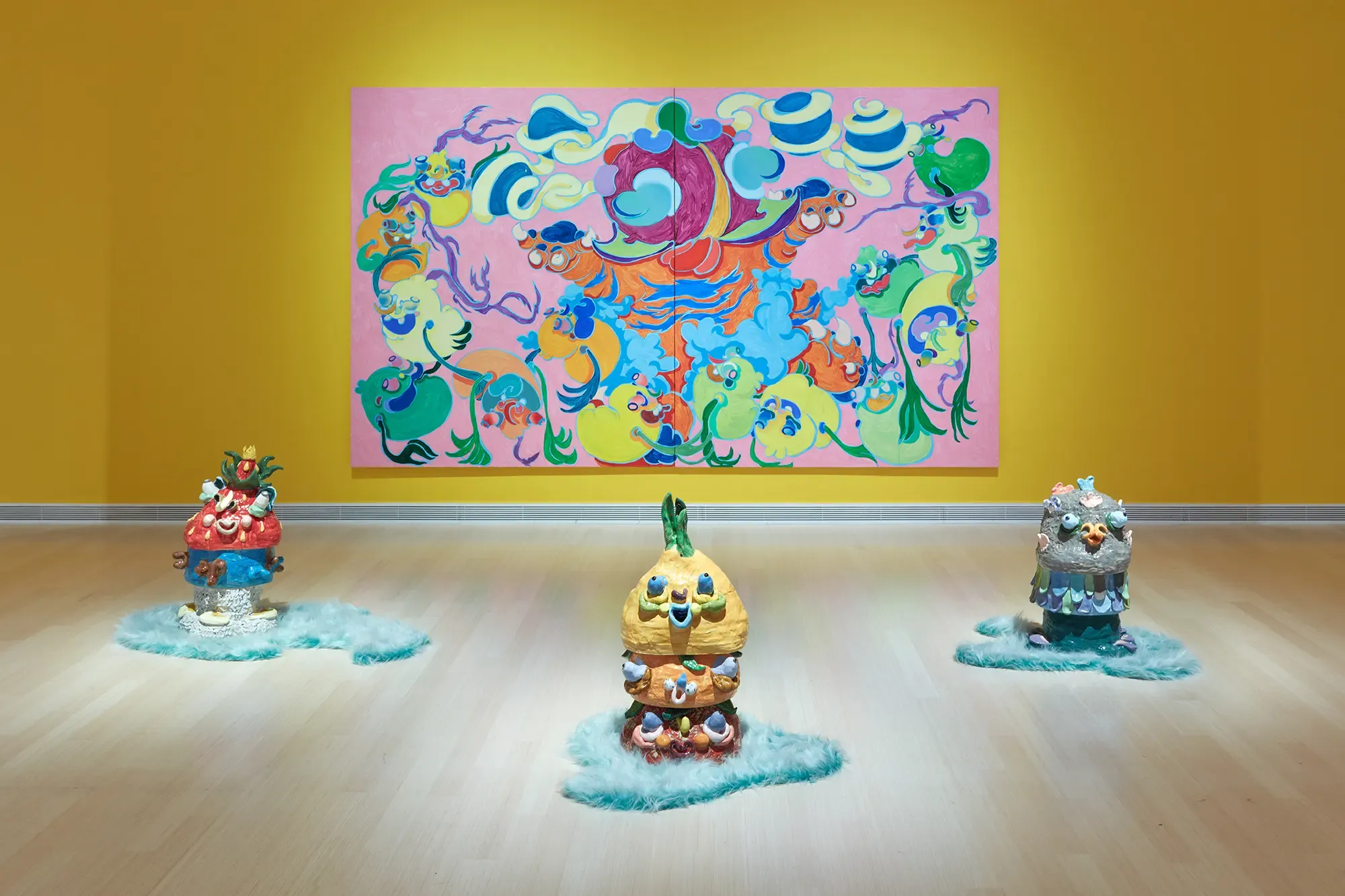How Sigmund Hutter Turns Everyday Consumer Waste into Contemporary Art
Discover the vibrant world of contemporary artist Sigmund Hutter, whose innovative use of consumer packaging and diverse techniques reflects his commentary on capitalism, identity, and modern society.

The Intersection of Identity, Capitalism, and Materials in Sigmund Hutter’s Work
Sigmund Hutter’s art transforms everyday plastic packaging from sweets and other consumer goods into striking collages and sculptures.
Through his works, he examines the impact of consumption on our identity and environment, highlighting both the omnipresence of advertising and the transient nature of plastic packaging.
By preserving discarded consumer packaging under glossy layers of resin, Hutter transforms everyday waste into lasting art, challenging us to reconsider the value and permanence of the objects we consume.
Using irony and humor, Hutter critiques modern society’s dependence on consumerism while simultaneously celebrating the aesthetic qualities of these materials and their ability to evoke memories.
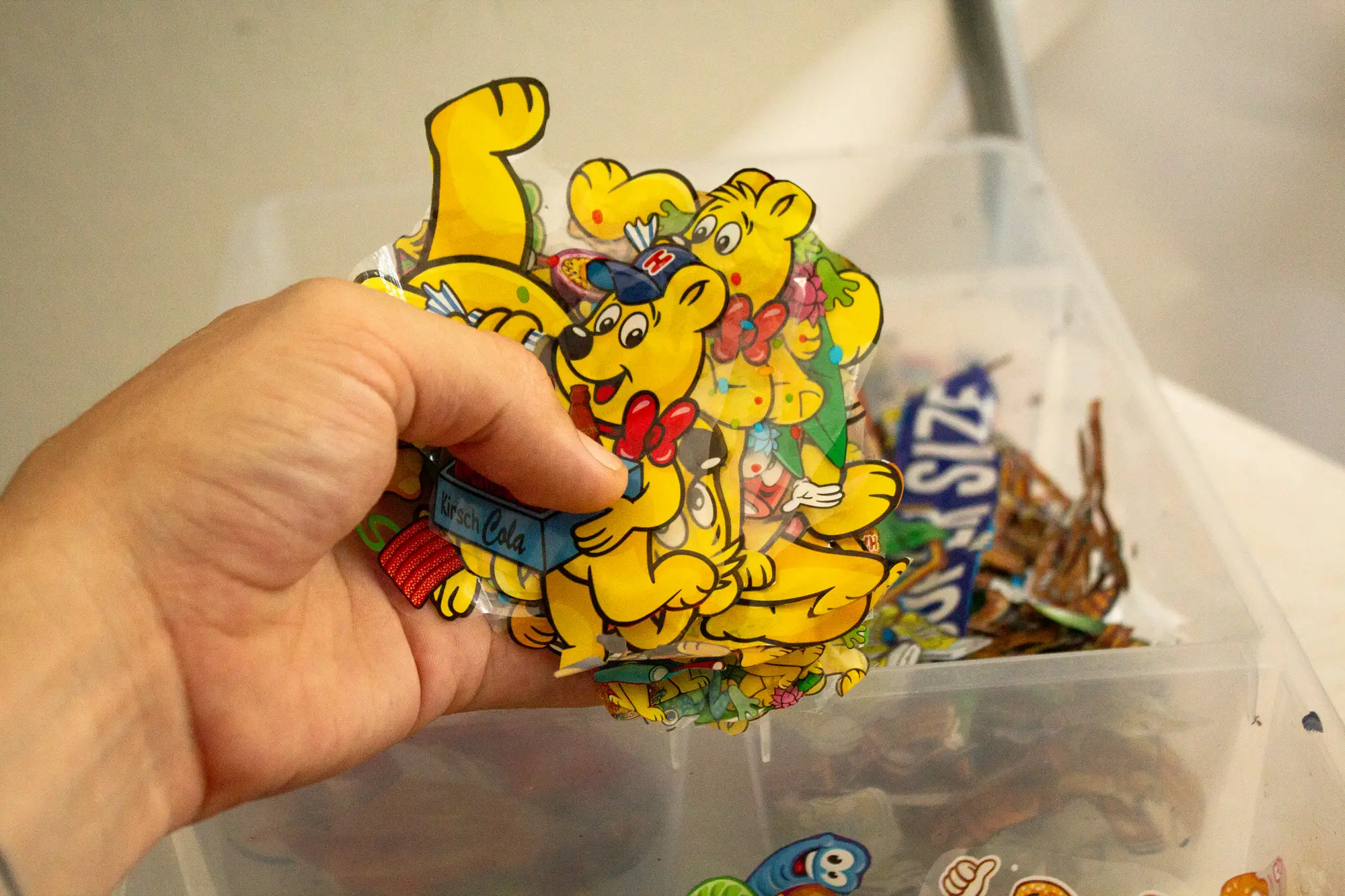
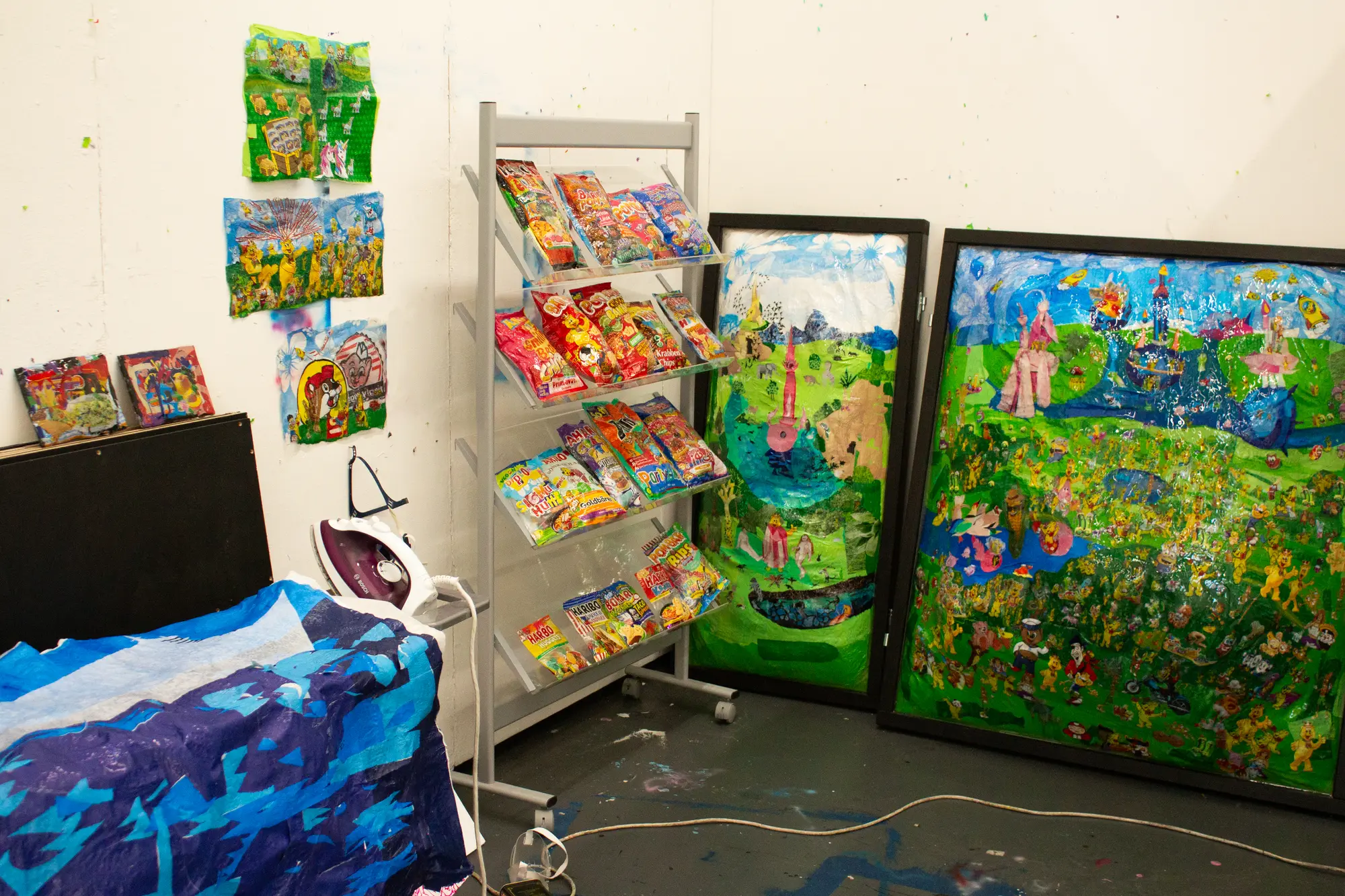
His pieces provoke reflection on sustainability and the significance of waste in our culture.
His work is characterized by a commitment to pushing boundaries, both in terms of the media he employs and the themes he tackles.
Sigmund Hutter’s personal experiences, particularly his engagement with everyday consumer materials, play a pivotal role in his creations.

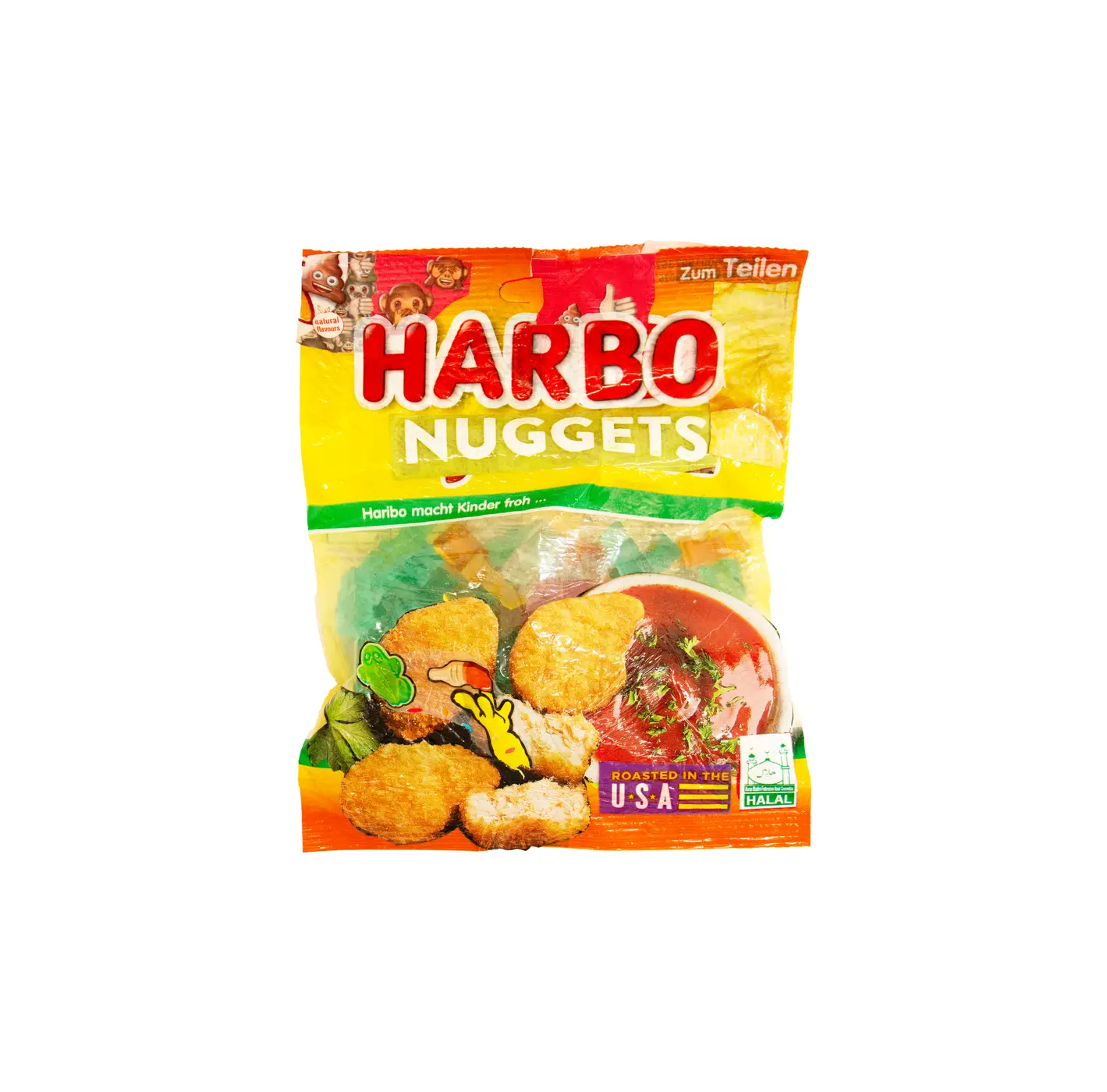
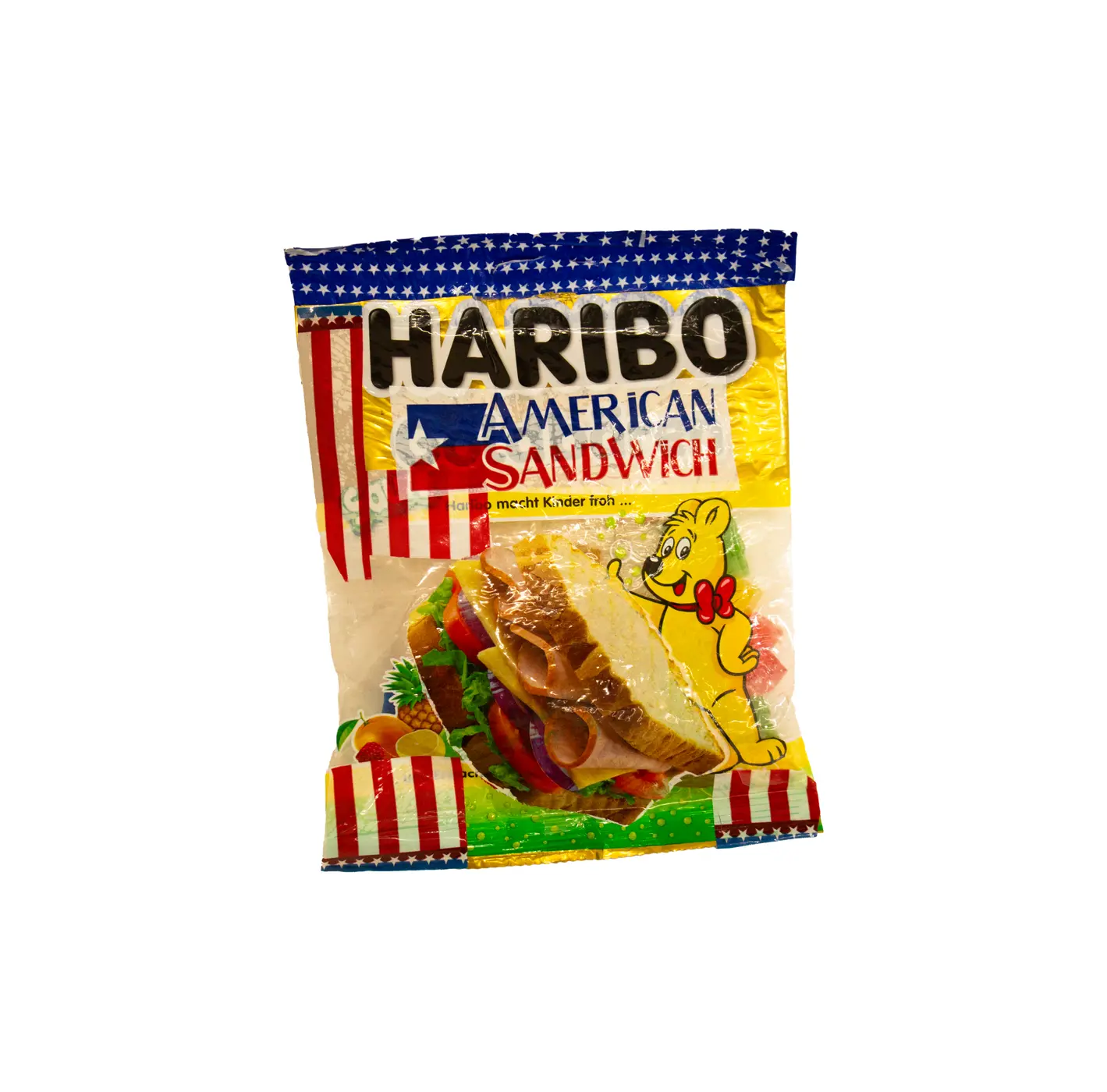
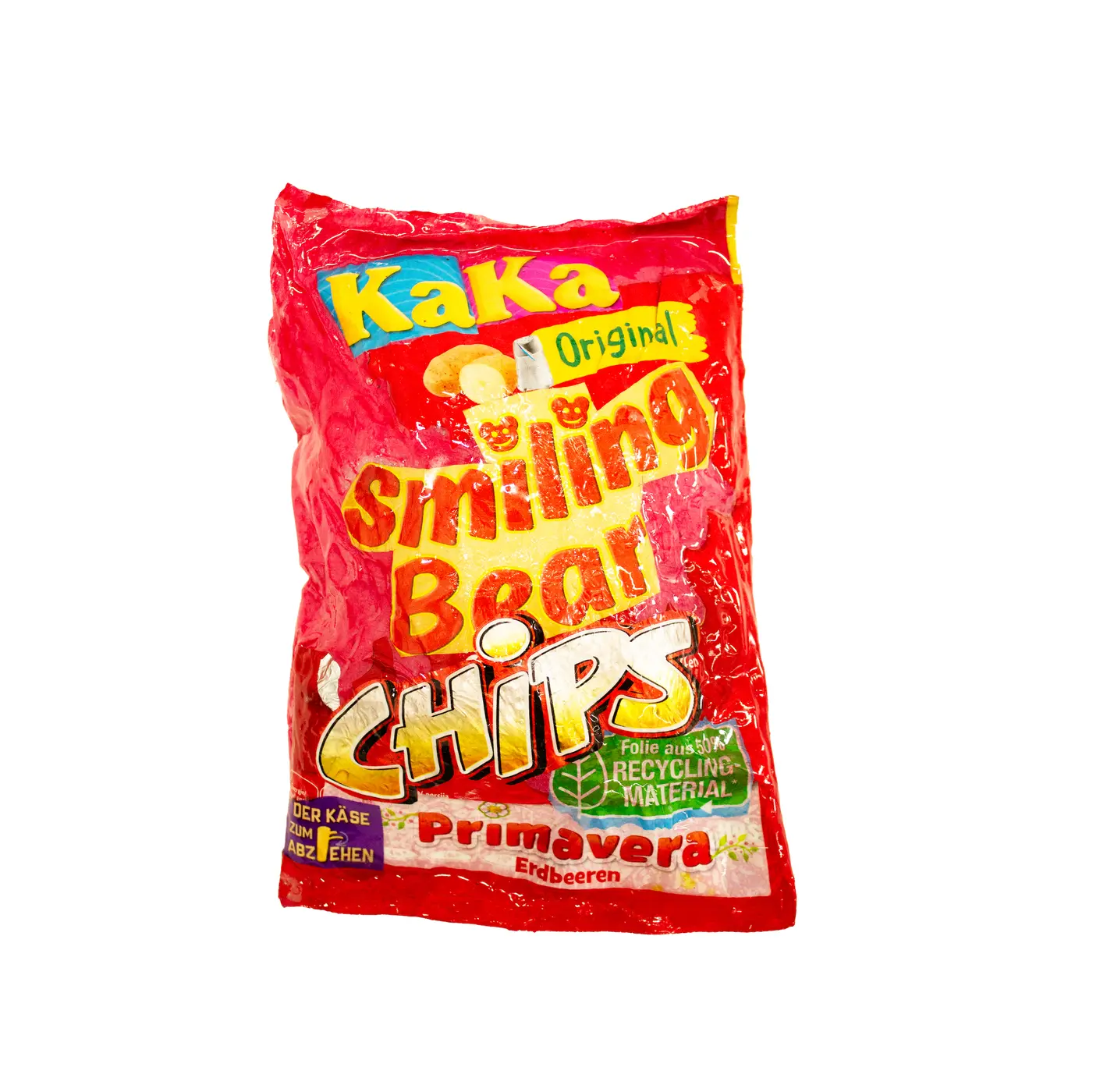
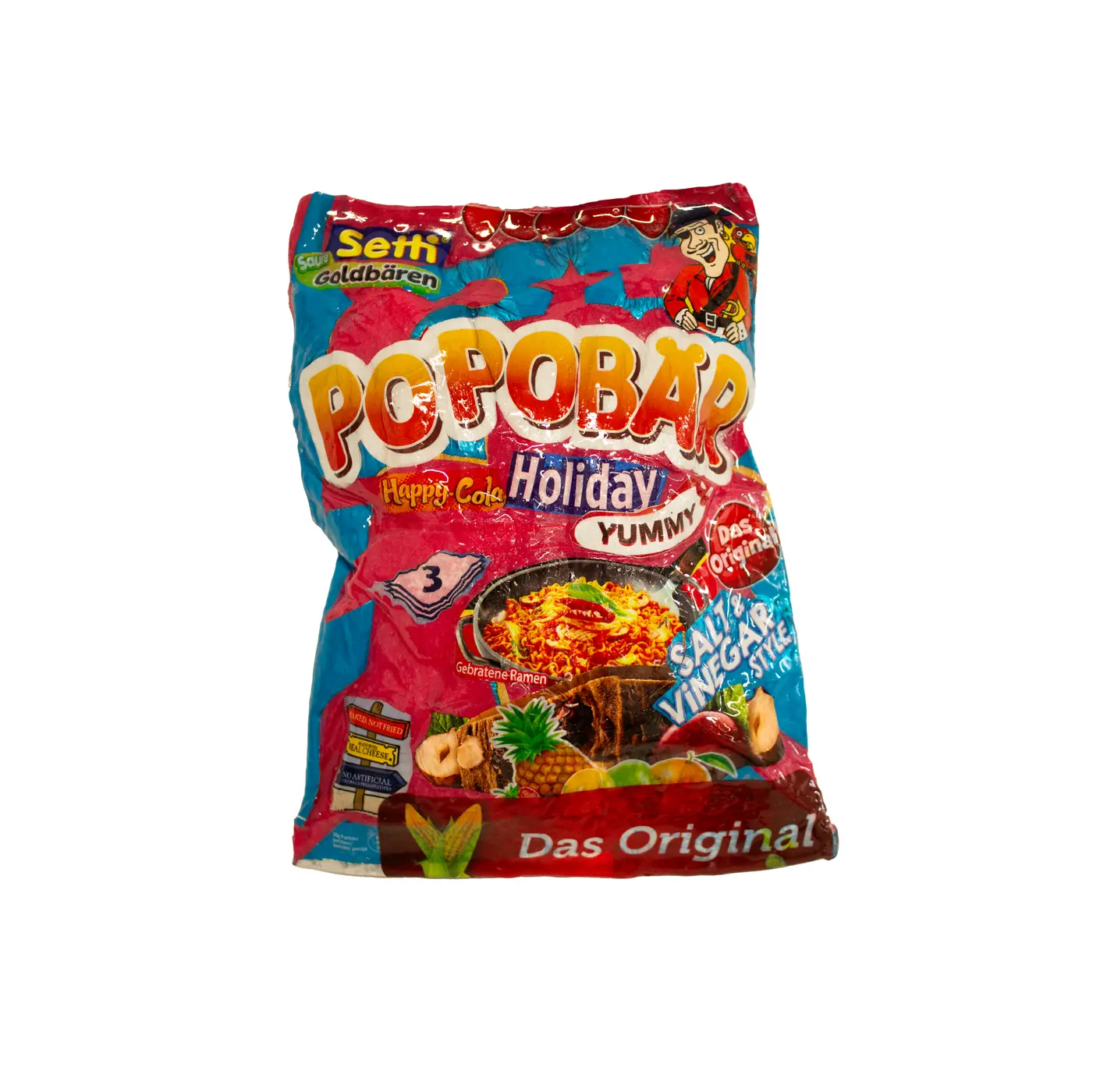
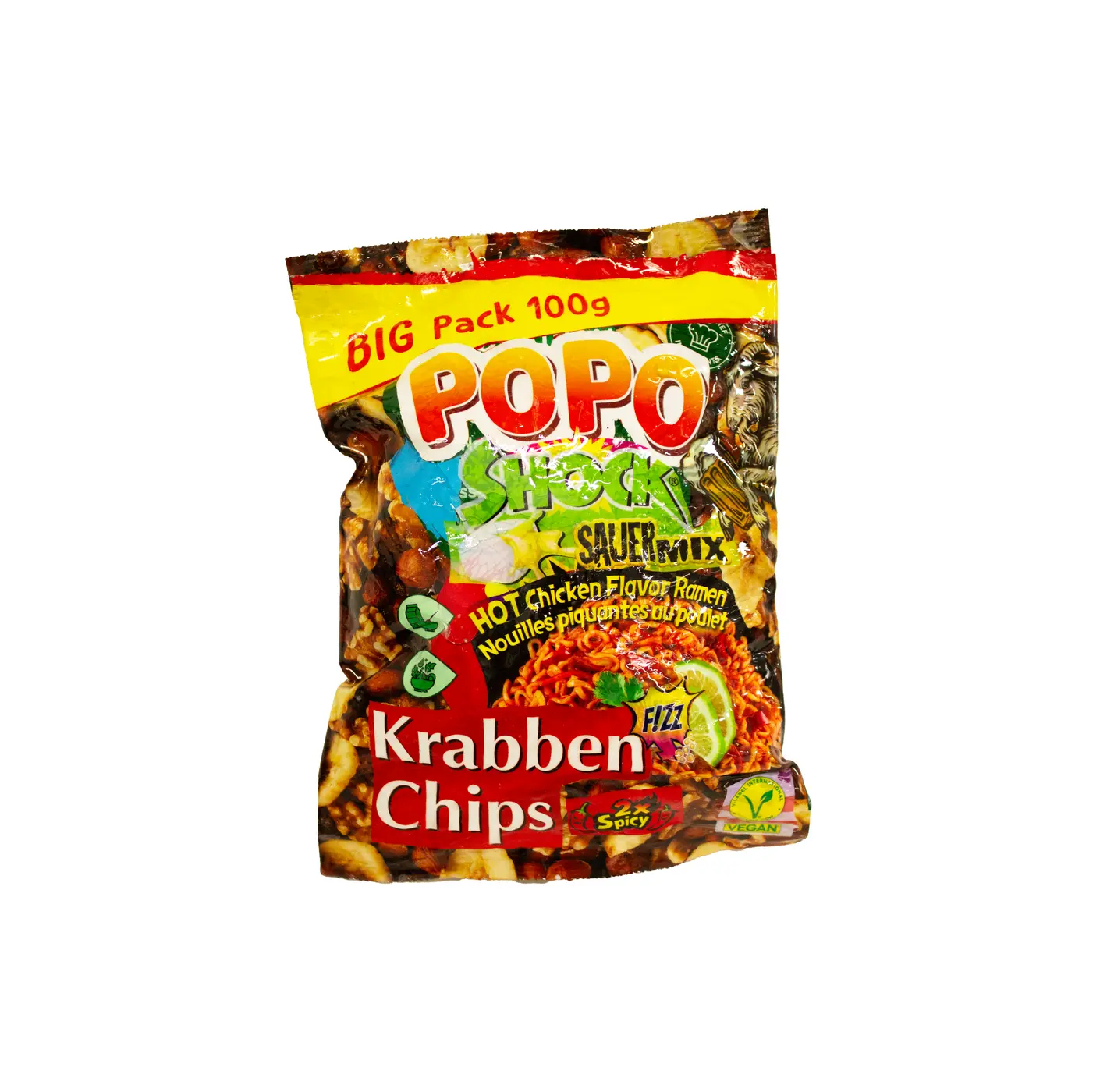
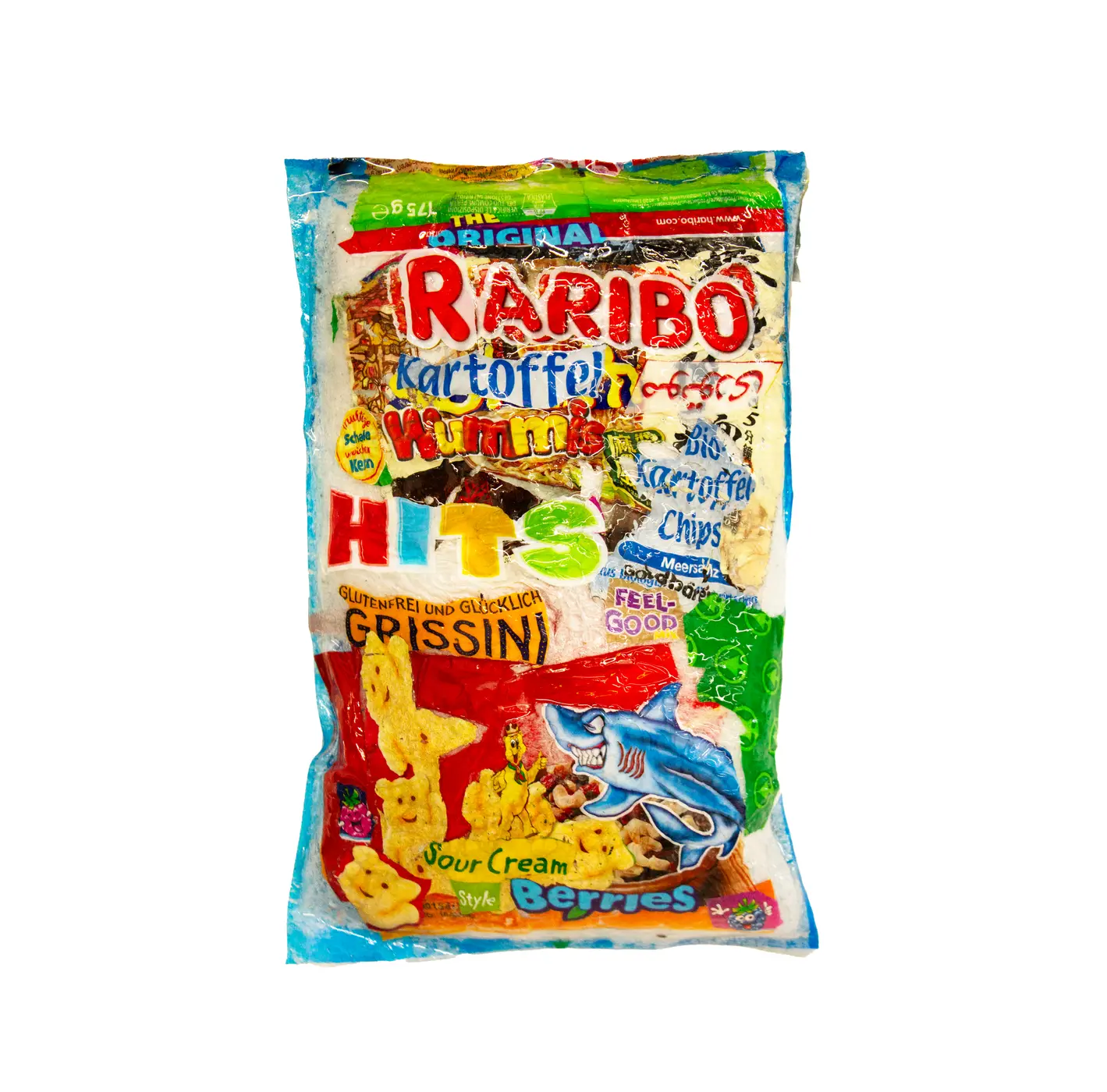
Sigmund Hutter's captivating artworks include Harboiar Front, Harbonuggets Front, Hariboamericans Front, Kaka Original Front, Popobär Front, and Raribo Front | Image Courtesy by the Artist
His art offers a critical, yet playful commentary on contemporary consumerism, capitalism, and identity, setting him apart in the crowded landscape of modern art.
From his early years, Hutter showed an aversion to artistic limitations.
Beginning with painting and drawing, he soon ventured into a wide range of techniques, including Airbrush, Punch Needle embroidery, 3D printing, and textile arts like tufting and wet felting.
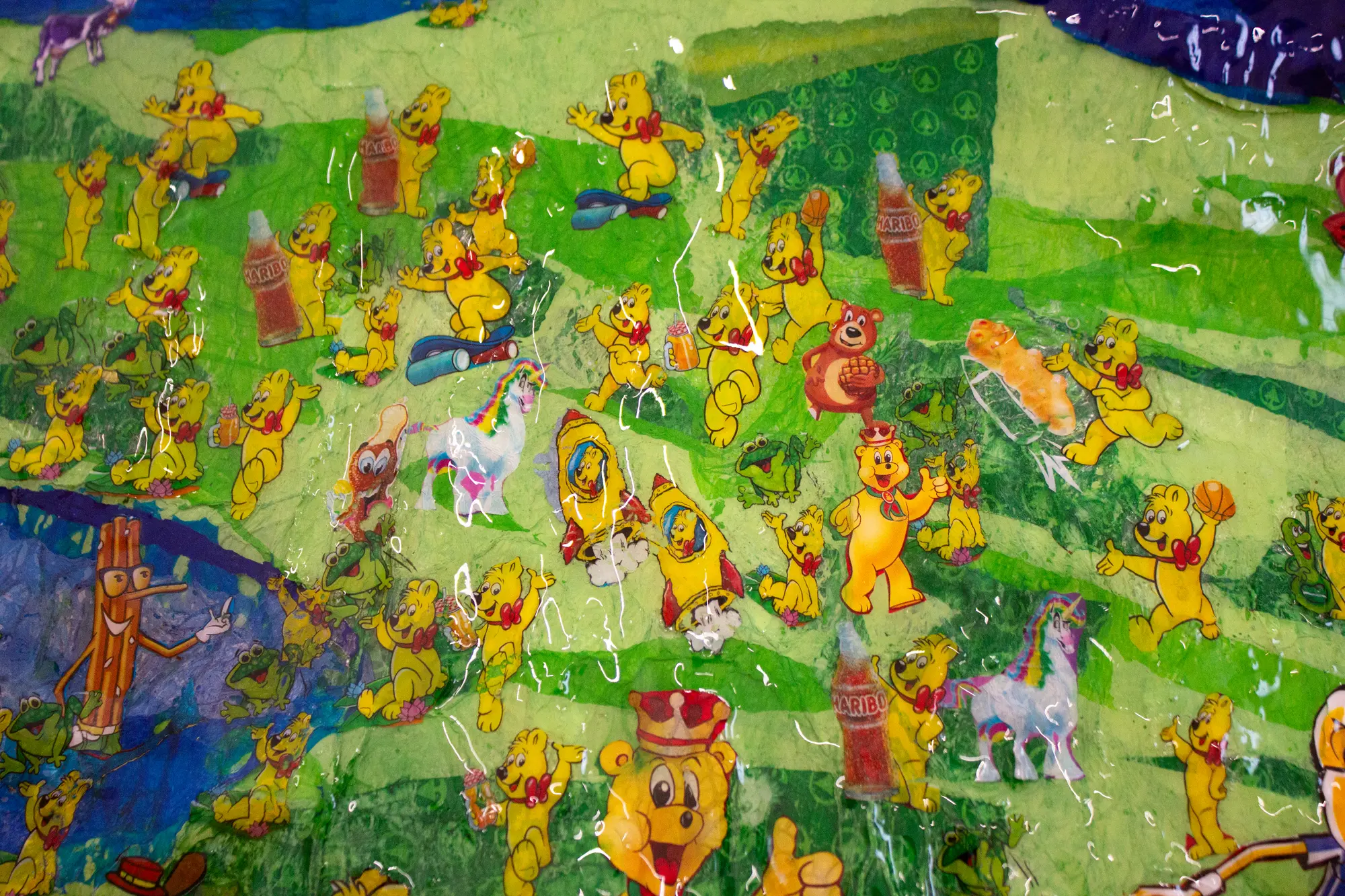
However, one of the most distinctive aspects of his practice is his use of plastics—specifically packaging from snacks, candy, and other consumer goods, which he collects, deconstructs, and repurposes into intricate collages.
This exploration of everyday materials not only reflects his interest in the aesthetics of marketing but also serves as a critique of waste, consumption, and capitalism.
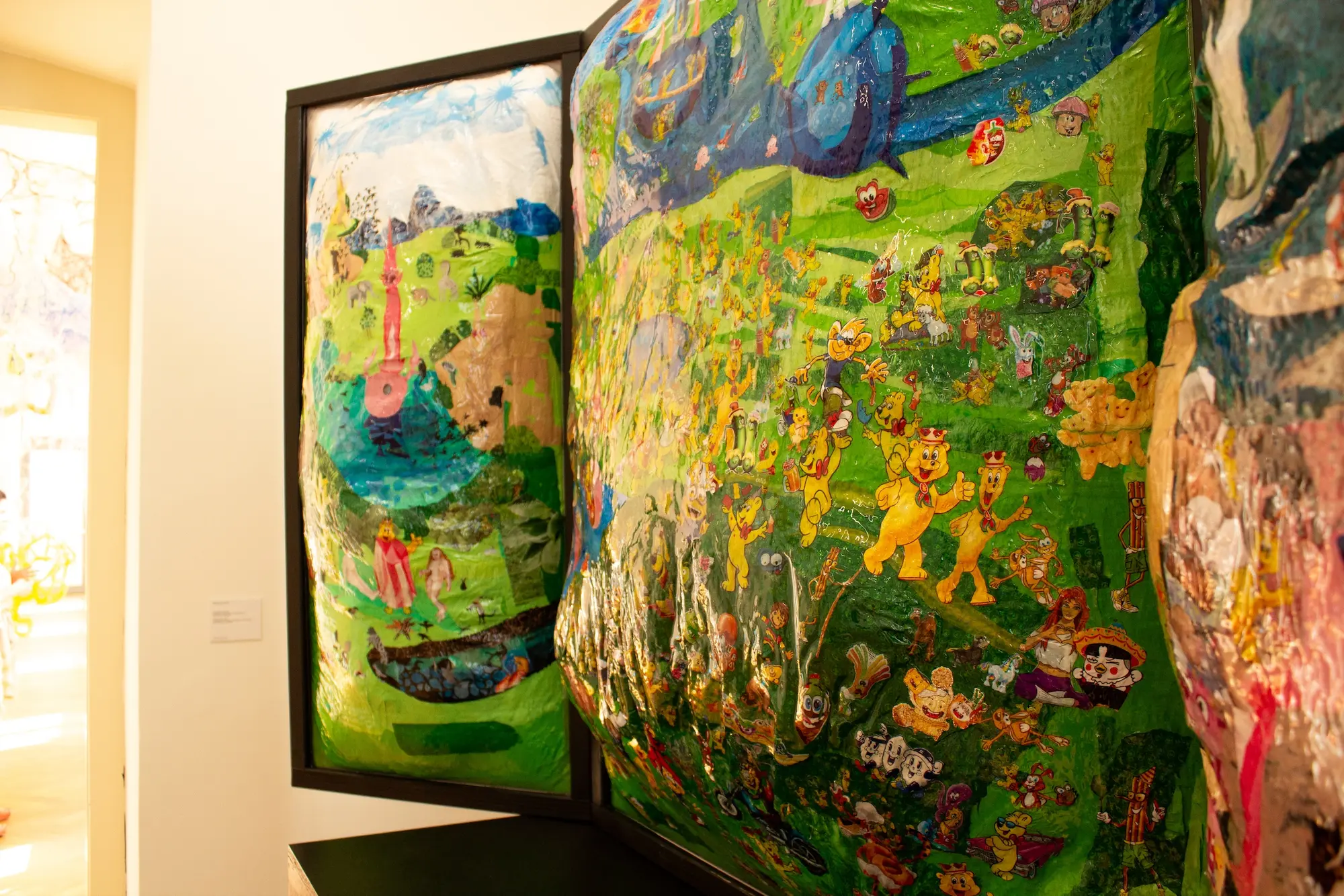
Hutter’s focus on packaging materials stems from his fascination with their design and purpose.
As he explains, these objects are meticulously crafted by marketing professionals to attract and manipulate consumers, yet they are discarded without a second thought once their product is consumed.
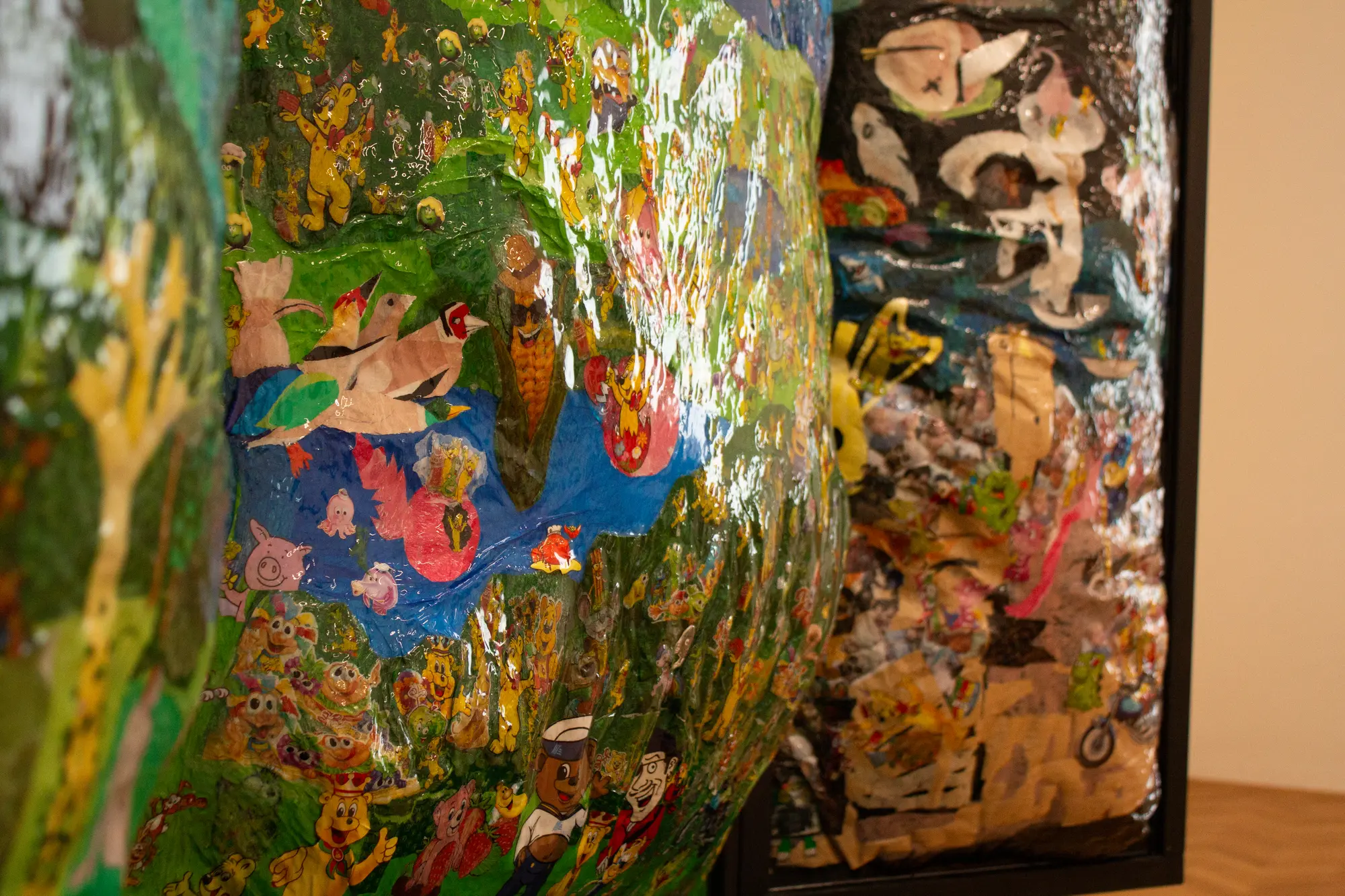
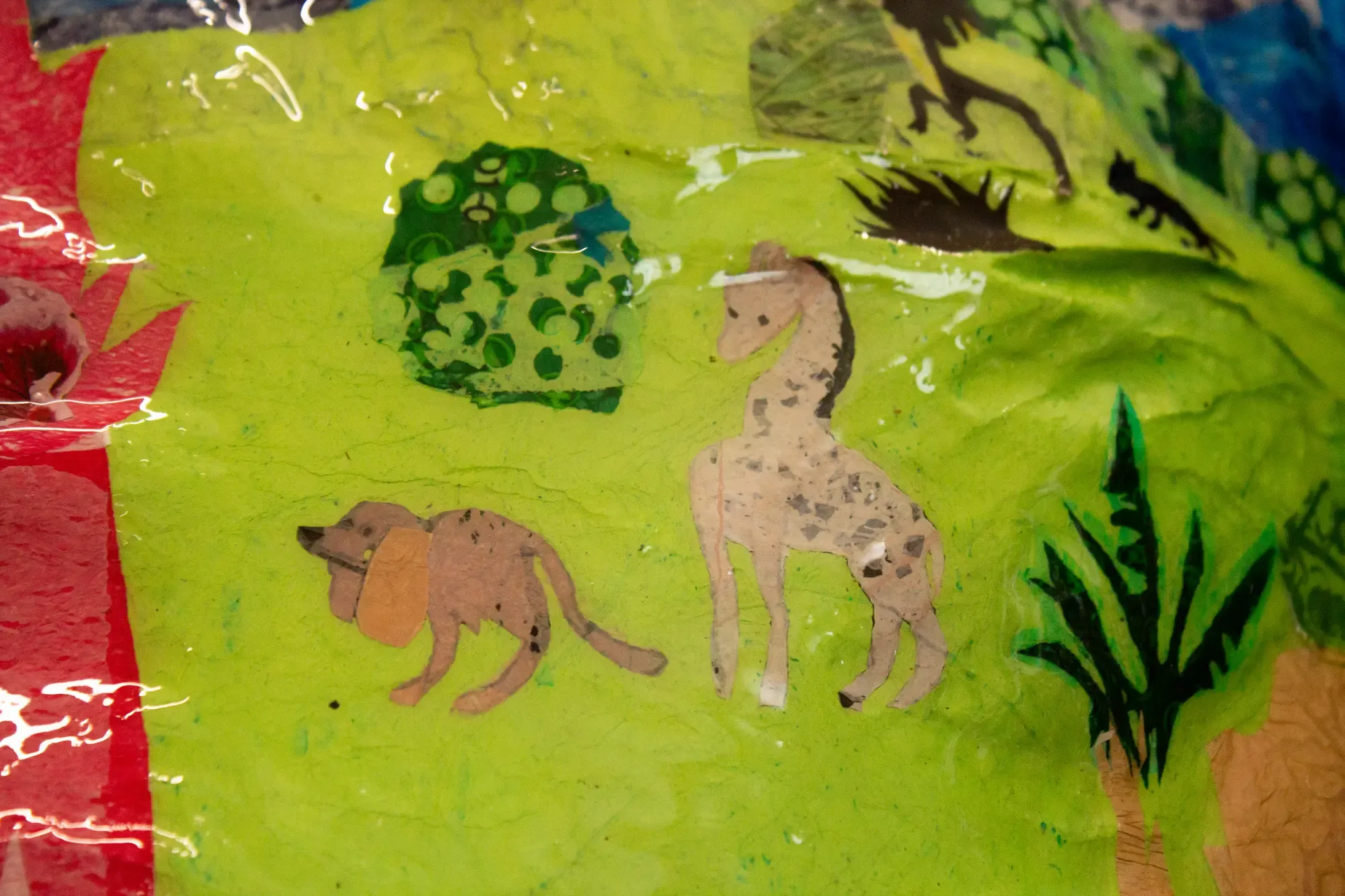
By using these materials as the foundation of his work, Hutter elevates what would otherwise be trash into high art, blending the boundaries between pop culture and fine art.
His collages often incorporate familiar mascots, logos, and slogans, creating a vibrant visual language that resonates with viewers on a subconscious level.
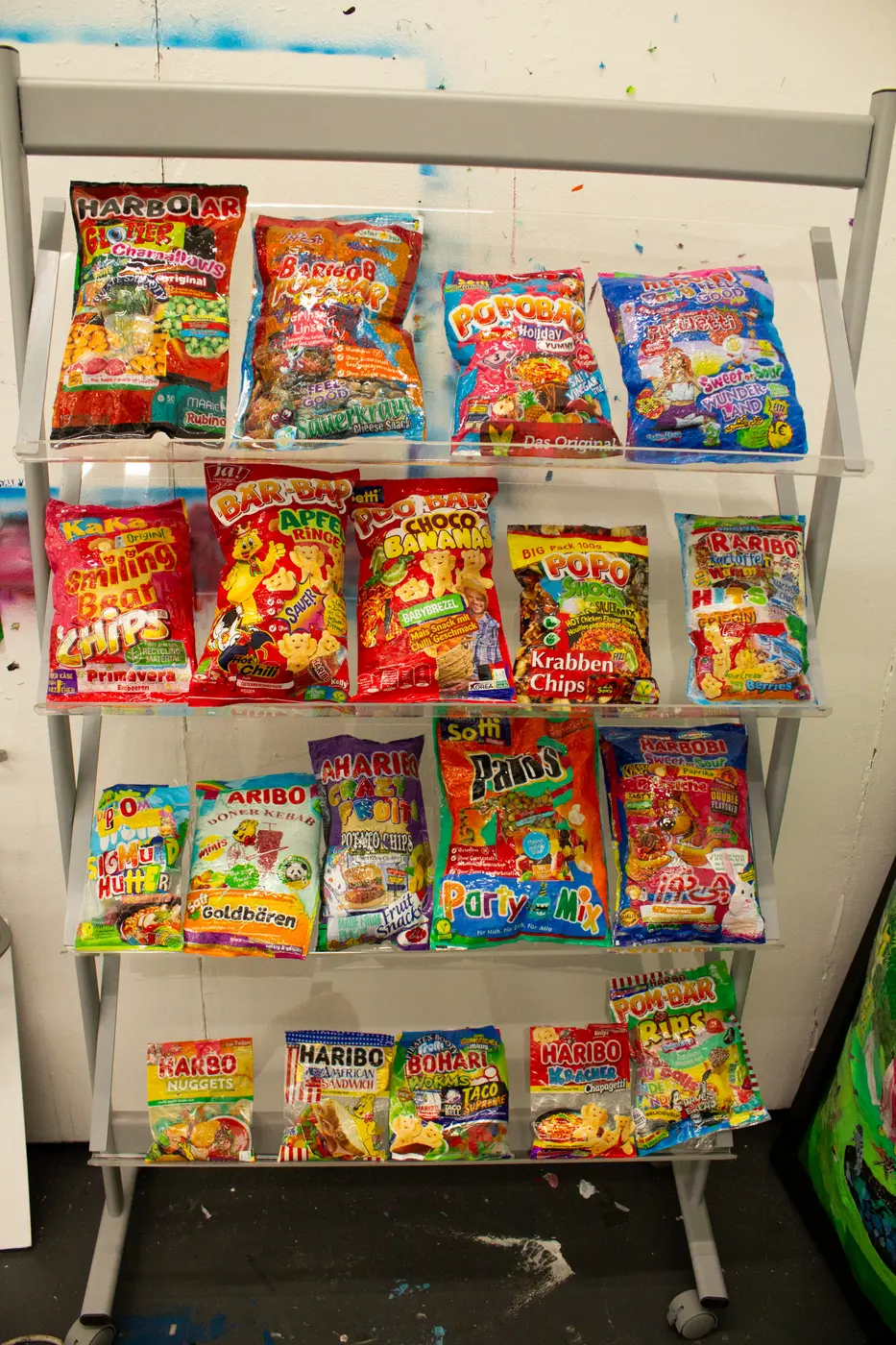
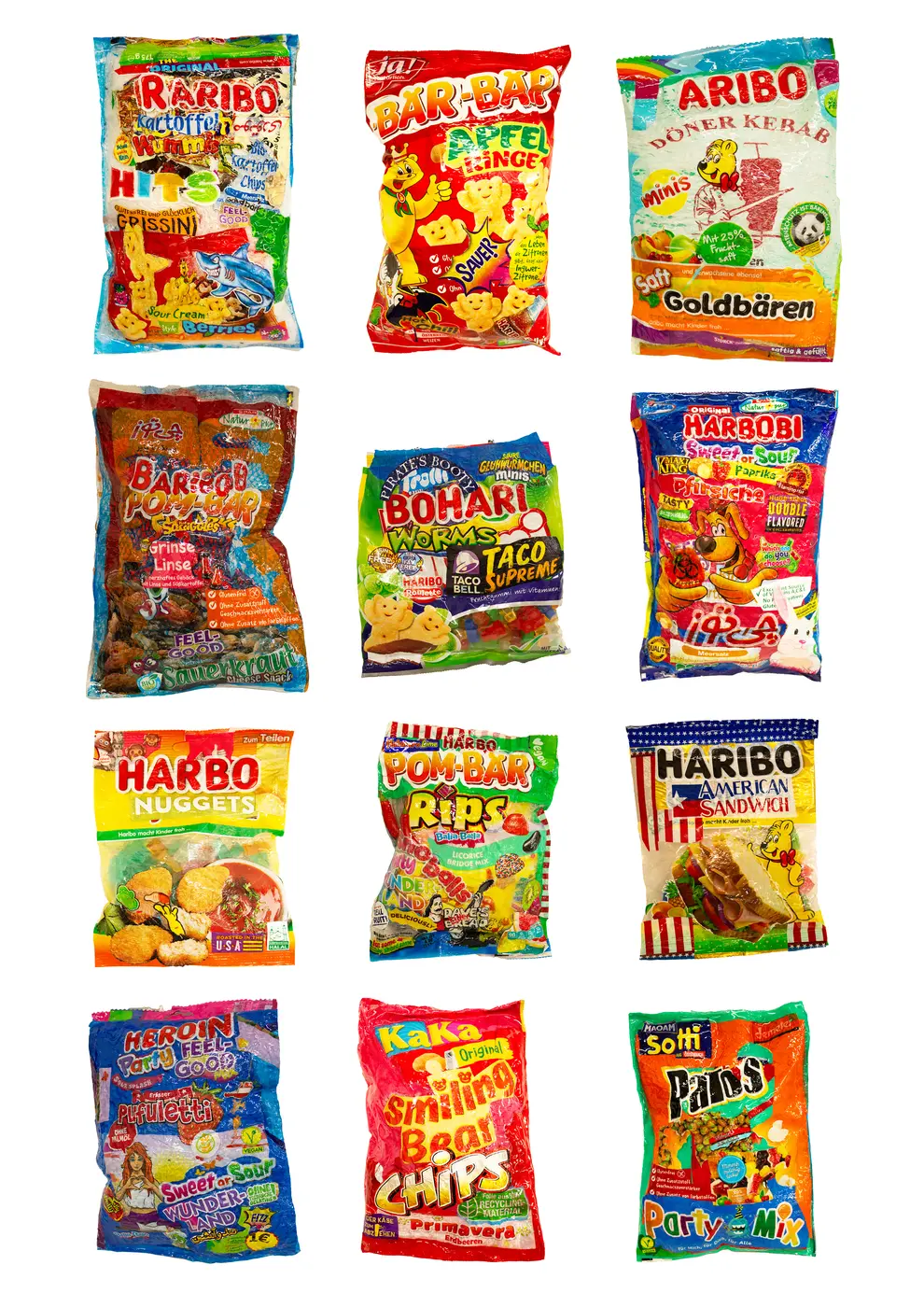
Sigmund Hutter: Yummy Snacks | Image Courtesy of the artist
A recurring theme in Hutter’s work is the exploration of identity, particularly through the lens of consumer culture.
His collages and sculptural pieces frequently feature iconic images from advertising, which he rearranges to create new, often surreal compositions.
This act of recontextualizing consumer imagery is both a celebration and critique of modern life.
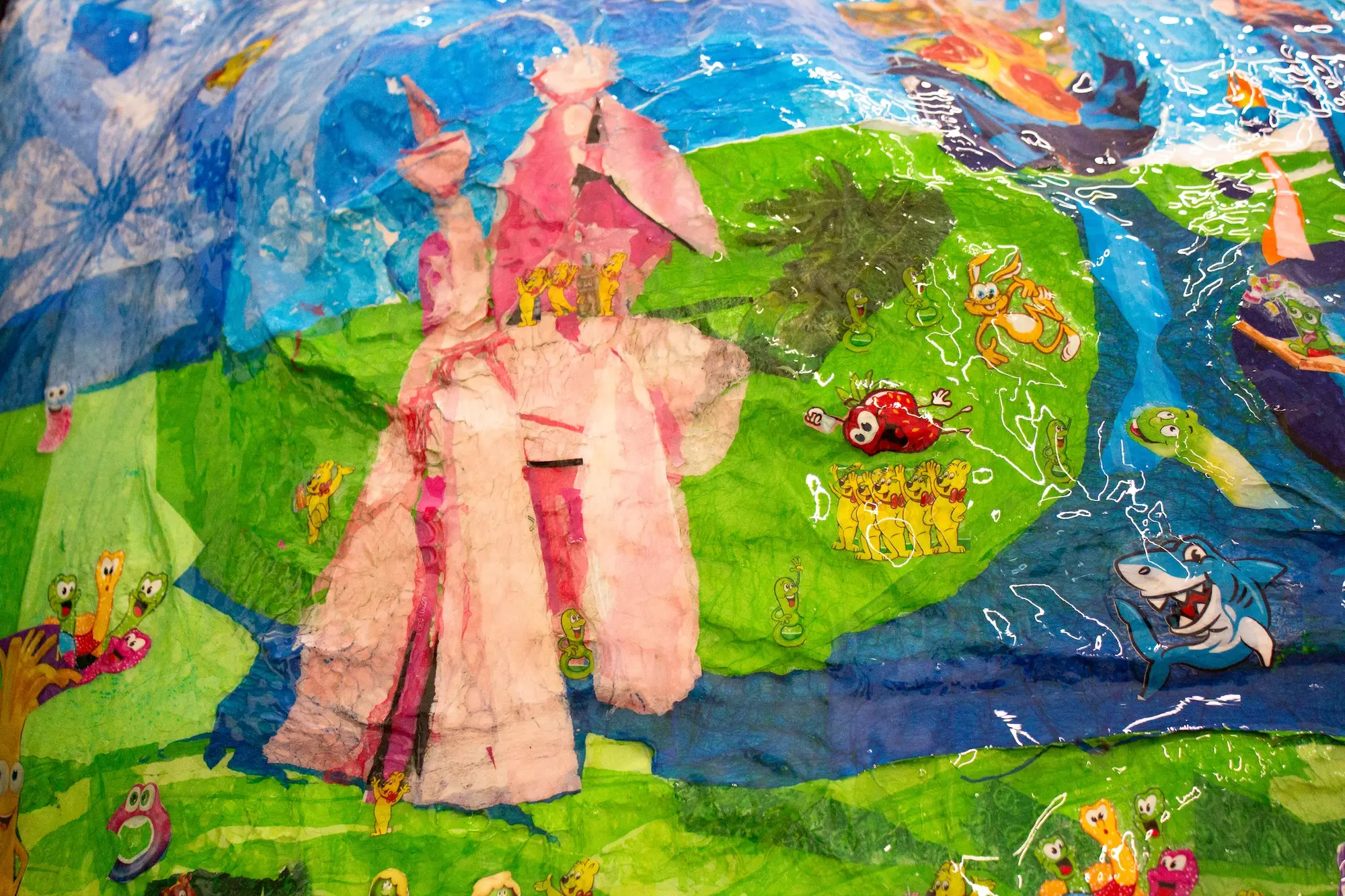

For example, in his reinterpretation of Hieronymus Bosch’s Garden of Earthly Delights, Hutter replaces Bosch’s allegorical figures with mascots from fast food and snack packaging.
Garden of Earthly Delights, Hutter replaces Bosch’s allegorical figures with mascots from fast food and snack packaging.
This juxtaposition of religious iconography with capitalist excess creates a thought-provoking commentary on how our desires and identities are shaped by the products we consume.
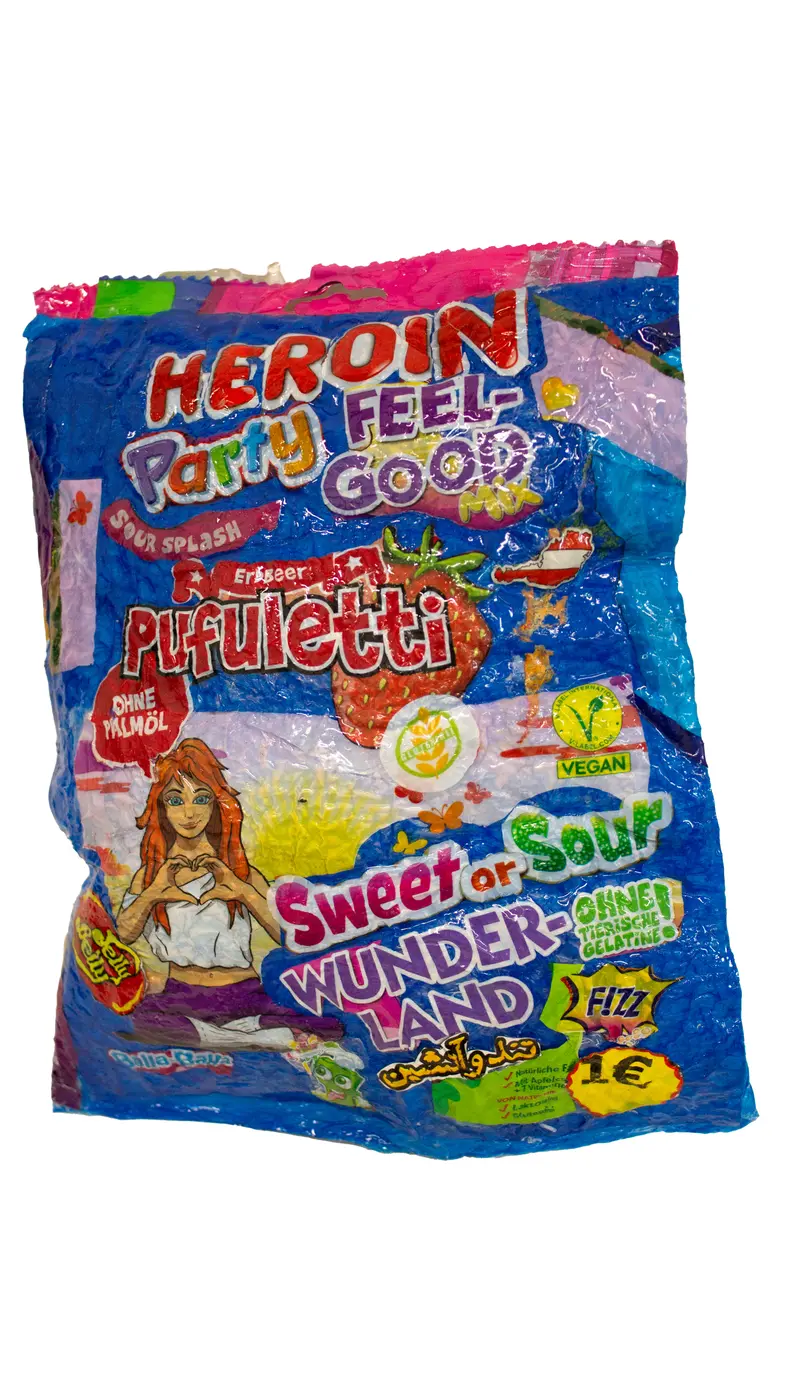
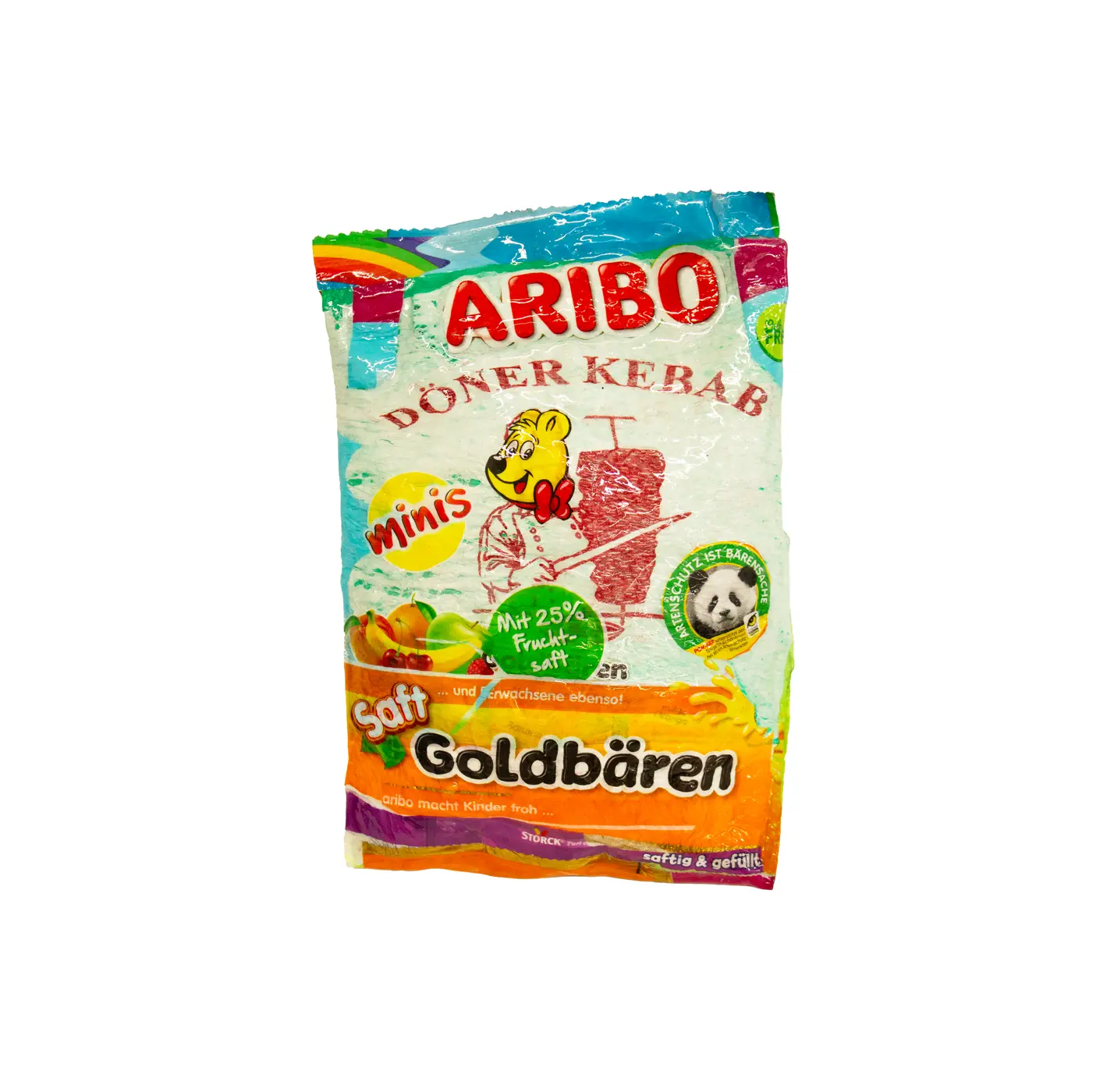
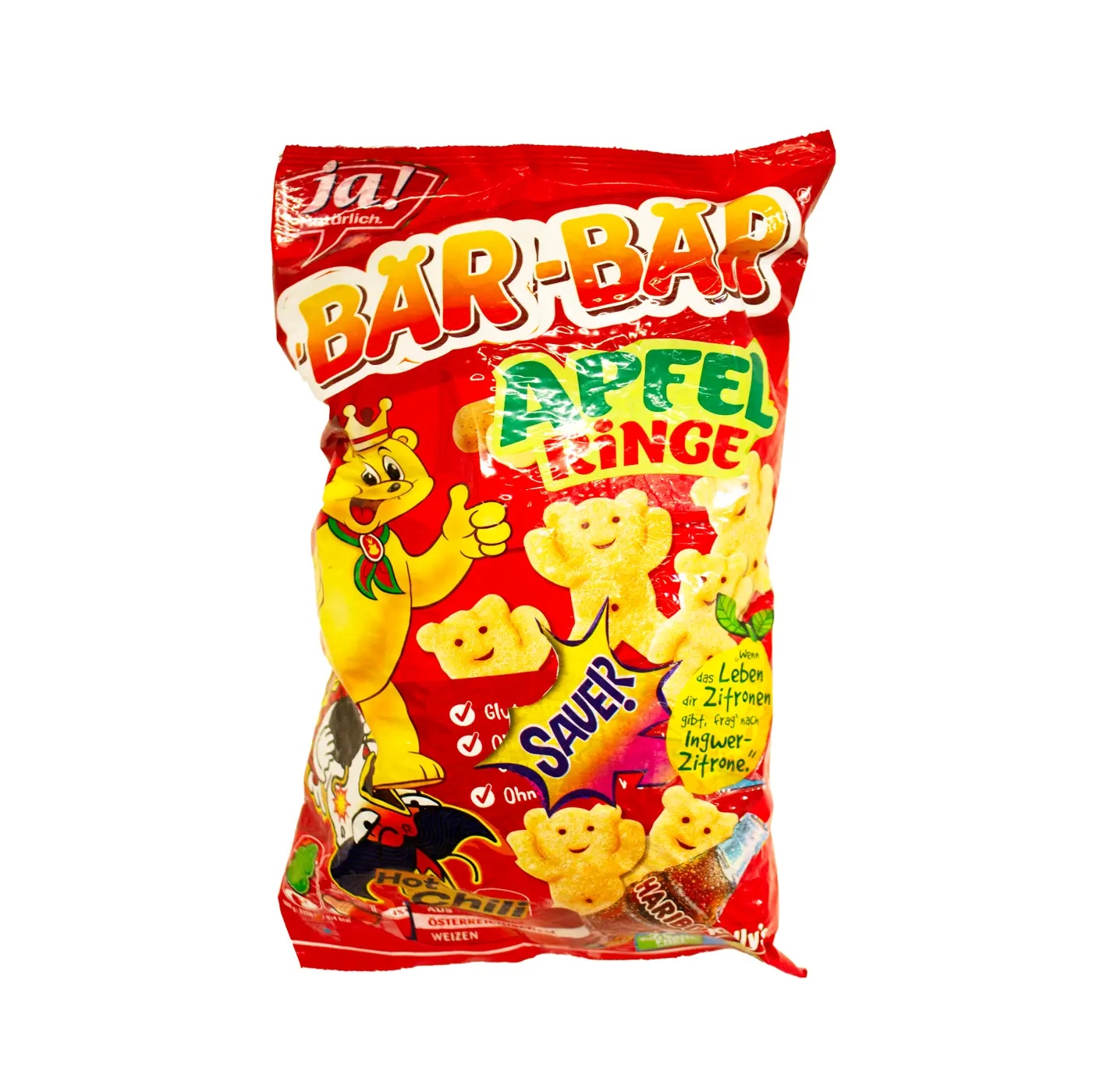
Sigmund Hutter: Heroin Front, BärBär, and Aribo Dönerkebab Front feature in Munchies Art Club Magazine’s showcase of his playful yet thought-provoking works. Hutter’s art explores consumer culture by reimagining familiar mascots and packaging in unexpected, layered compositions. His pieces invite viewers to reflect on the role of branding and consumerism in modern life
Hutter’s use of materials is not merely aesthetic but deeply conceptual.
The act of collecting, cutting, and ironing plastic wrappers to create his collages extends the lifespan of these materials, which are typically seen as disposable.
By preserving them in layers of glossy epoxy resin, he challenges the viewer to reconsider the value and permanence of objects associated with waste.
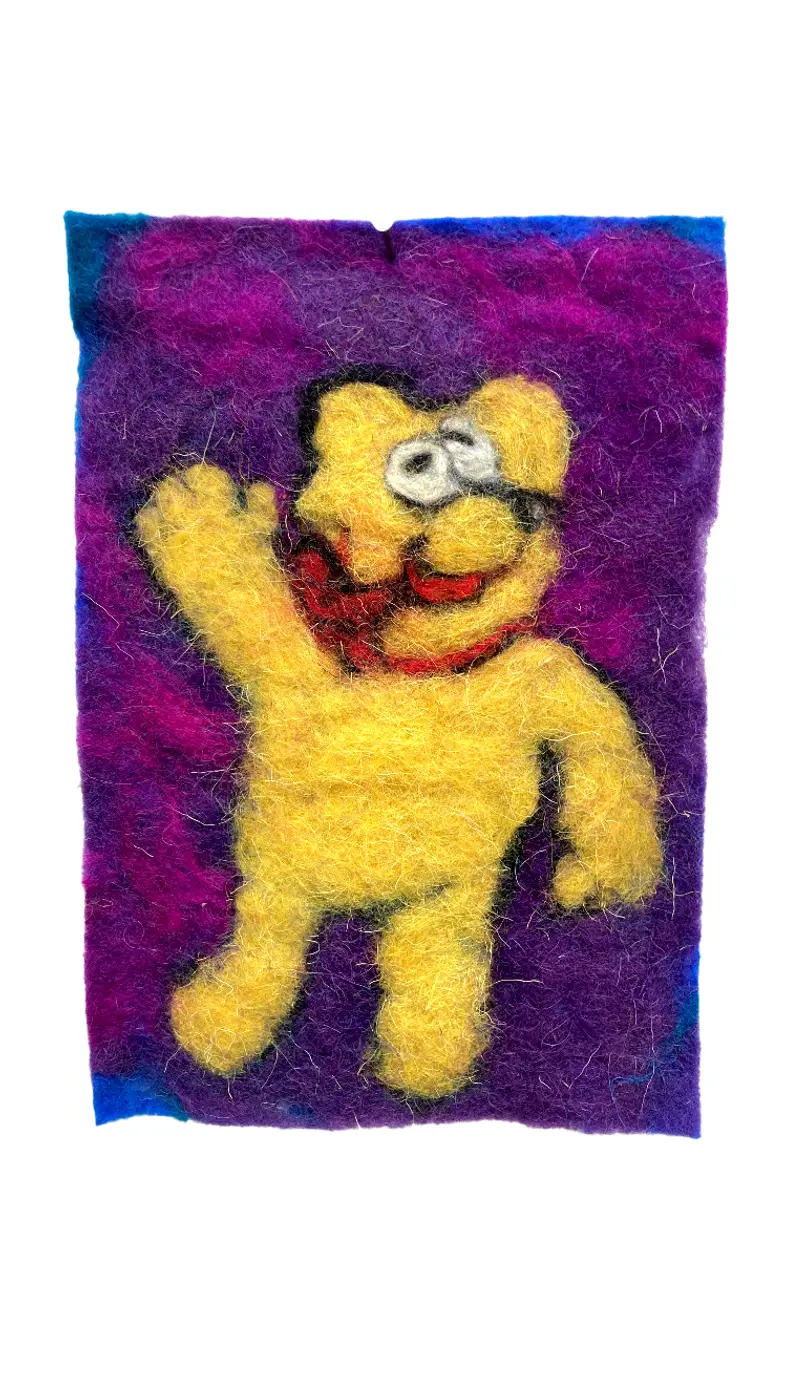
This material transformation reflects a broader conversation in contemporary art about sustainability, consumerism, and the environment.
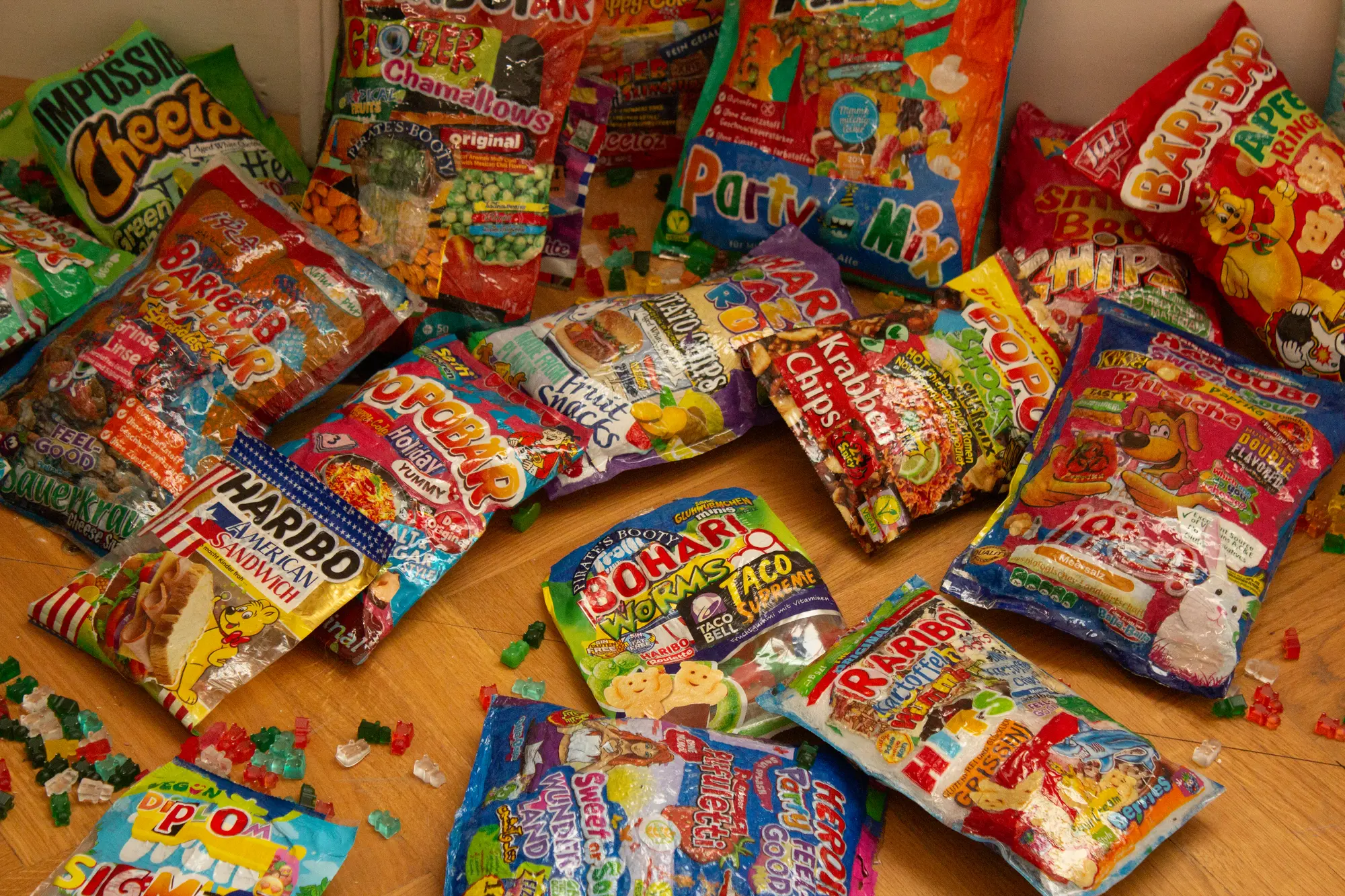
As artists across the globe grapple with the environmental impact of their materials, Hutter’s work offers an innovative approach to addressing these issues while maintaining a strong conceptual underpinning.
His art also delves into broader social and political themes, including nationalism, conspiracy theories, and the complex intersections of masculinity and identity.
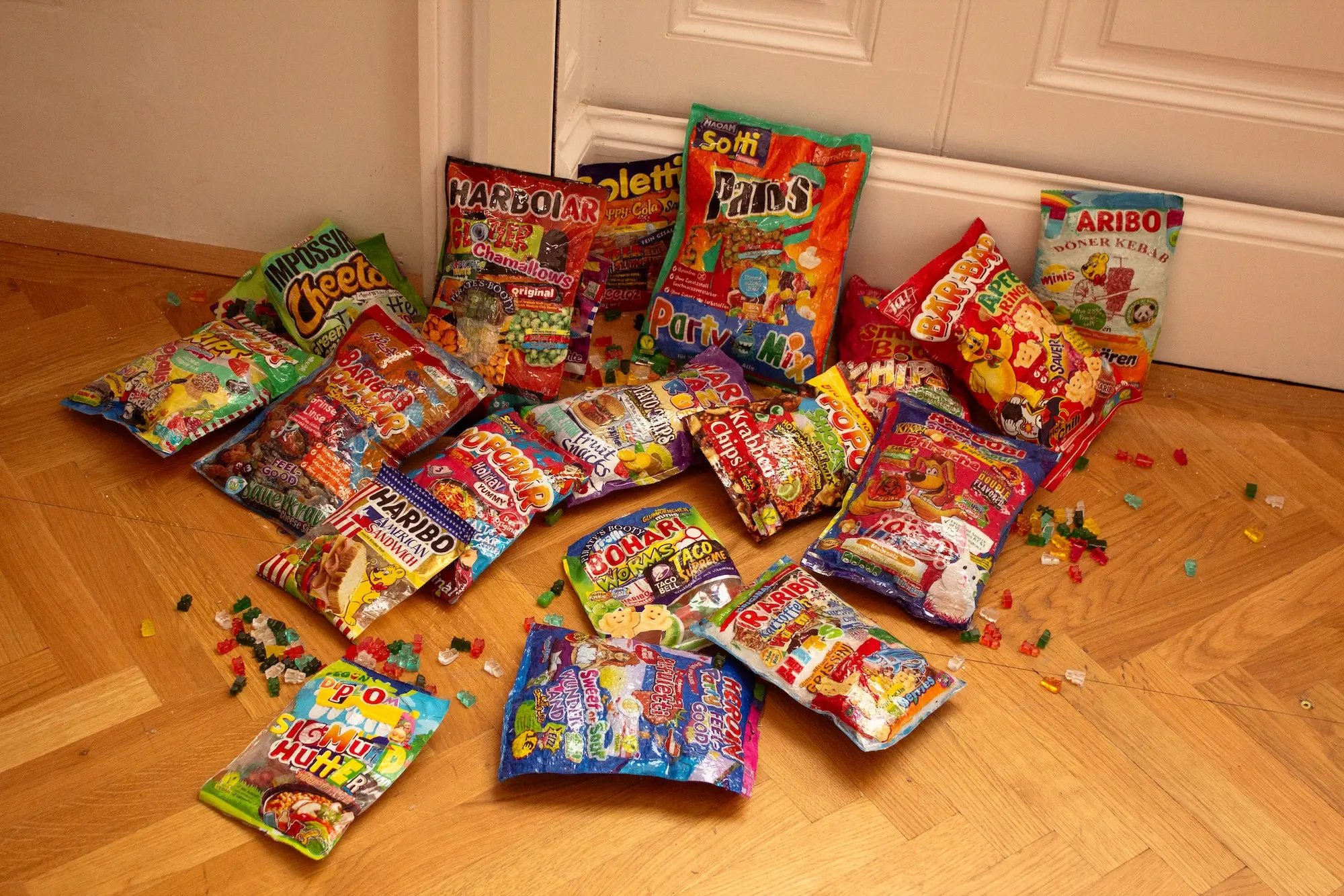
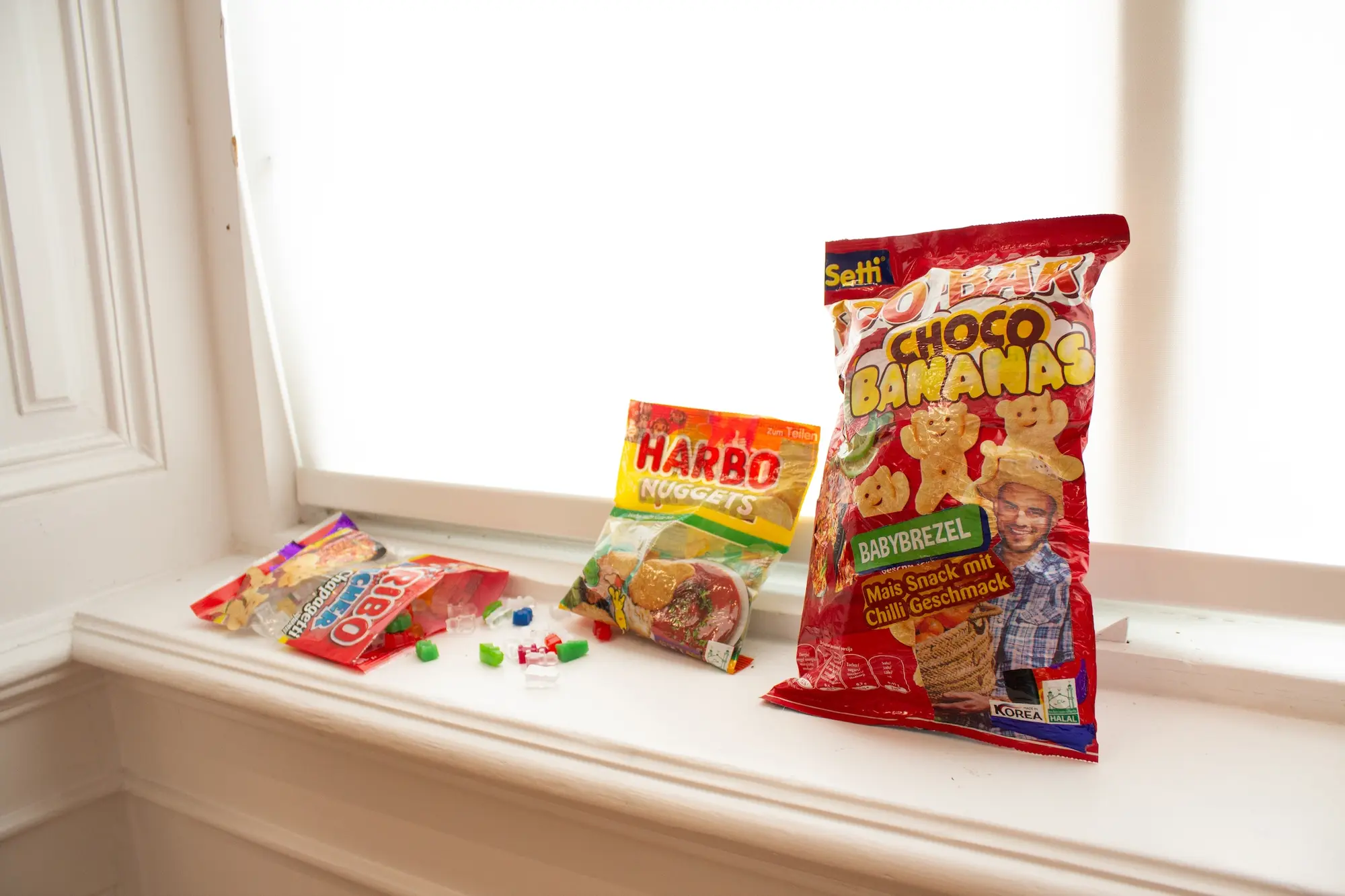
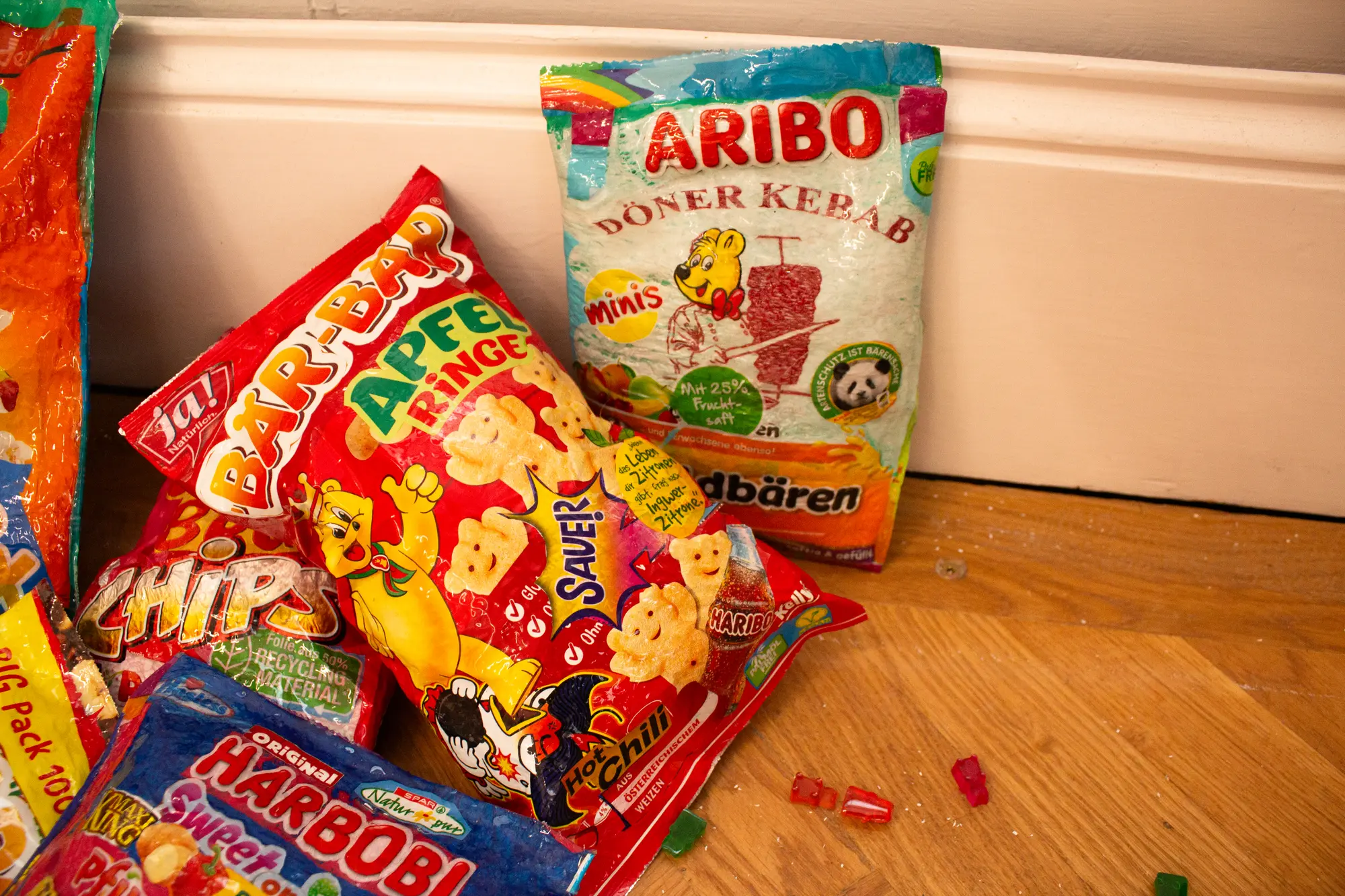
Sigmund Hutter’s 2024 diploma piece at the Academy of Fine Arts Vienna highlights the playful reimagining of snack packaging, offering a witty yet reflective commentary on consumer culture.
A notable example is his series on "Preppers," where Hutter explores the psyche of individuals preparing for societal collapse.
In these works, he critiques the hypermasculine tropes often associated with survivalism, revealing the absurdity and underlying anxieties of these narratives.
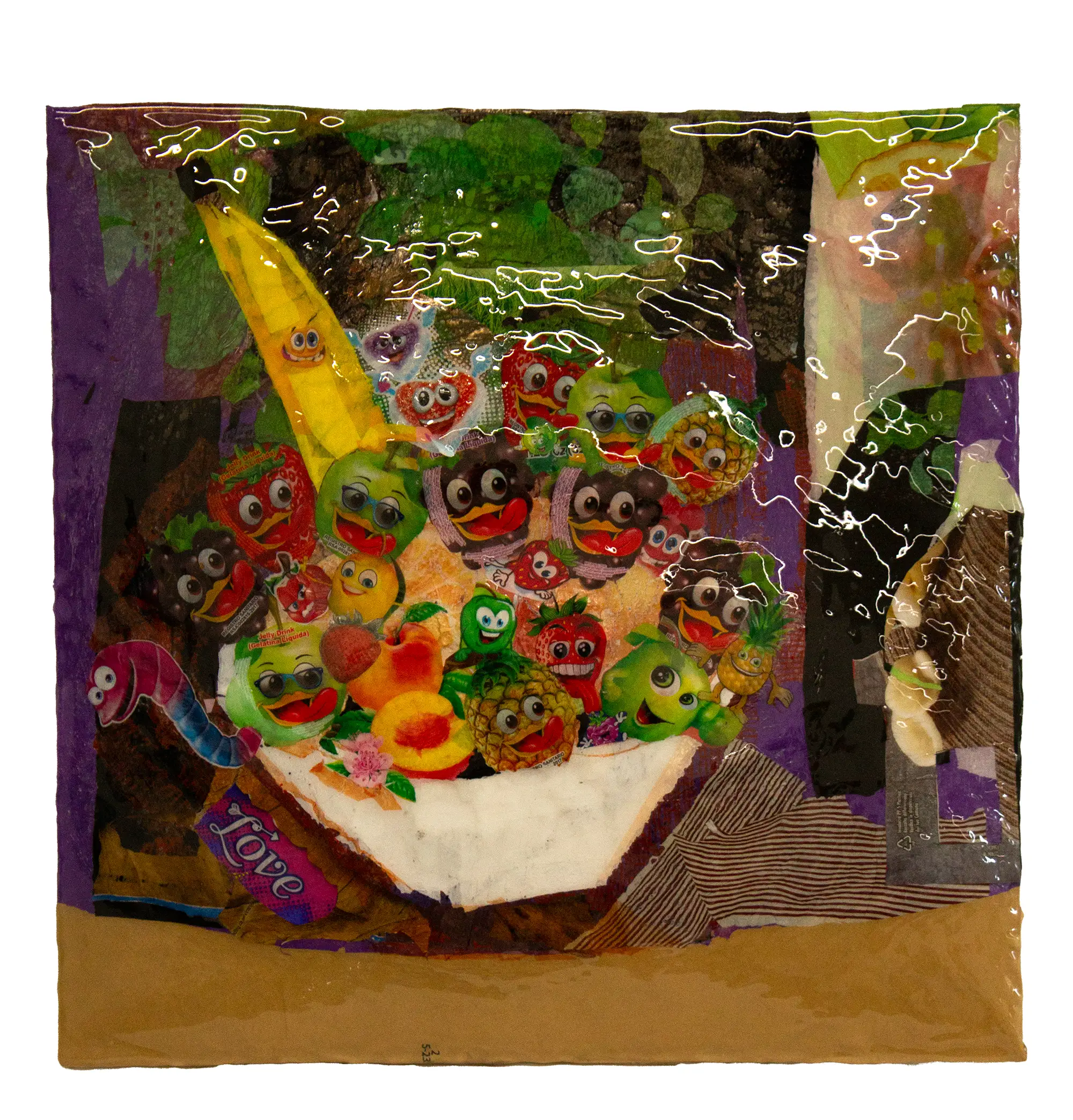
Sigmund Hutter’s contribution to contemporary art lies not only in his inventive use of materials but in his ability to connect deeply personal themes with larger cultural conversations.
His art bridges the gap between fine art and the everyday, forcing us to confront the realities of our consumer-driven world.

As the lines between high and low culture continue to blur, artists like Hutter offer a unique lens through which we can critically engage with the systems that shape our lives.
Follow Sigmund Hutter’s artistic journey and dive deeper into his innovative work on Instagram.
Show your support as he continues to explore the intersections of consumerism and art through his thought-provoking creations
Are you an artist as well?
We invite you to submit your work for a chance to be featured.
Join our community and showcase your unique creations!


